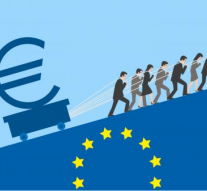
Bringing Economy Back to the European Agenda, Again
Economy 26 March 2018“During our discussion on EMU, President Draghi recalled that the EU economy is back to pre–crisis growth levels and remains extremely strong. In fact, we are experiencing the most favourable situation since the introduction of the euro, which makes this a very good time to reflect strategically on our long-term ambitions. This is what today’s Euro summit was all about.”
– Mr Donald Tusk, President of the European Council
The European Council convened on March 22-23. The Heads of States and governments gathered to discuss everyday issues, some would say. Some EU Member States would believe that every single European Council’s meeting represents a unique way to express their own internal problems to the common European agenda. Traditionally, with the political issues mostly dominating the Council’s agendas, economy was put aside. Now, economy was brought to the European agenda again. How will the European Economic Semester mechanism, established in 2011, contribute to the overall economic development of the EU, and what are the structural reform packages discussed within?
What is in stake with the March Council’s meeting?
Recently, four meetings of the EU leaders have been held: European Council, then European Council (art.50), leaders meeting on taxation and Euro Summit. The most important one was for sure the first one, where several economic reform packages were presented.
The package is composed of the measures for the economic and financial reforms. The Structural Reform Support Programme (SRSP) finances tailor–made, on–request technical support to Member States to help them with their reform efforts. It has a budget of EUR 142.8 million for the period from 2017 to 2020 and helps Member States to carry out the reforms that they consider necessary to make their economies more competitive and investment–friendly. The support is available to all EU Member States, it is demand–driven and requires no co–financing. The programme is implemented by the Commission’s Structural Reform Support Service (SRSS), in cooperation with other Commission services. The SRSS has so far supported fifteen Member States to carry out over 150 support projects. Under the SRSP 2018 cycle, the SRSS has received 444 requests for support from over twenty Member States, leading to a substantial excess demand for the SRSP budget of EUR 30.5 million for 2018.
The technical support covers reforms in the areas of governance and public administration, public financial management, business environment, labour markets, health and social services, financial sector and access to finance. It draws on a good practice from across the European Union, as well as expertise from international organizations, the private sector and the Commission. Practical support and guidance is given throughout the reform process, from preparation to design, through to implementation and evaluation of reforms. It helps implementing reforms listed under economic adjustment programmes, according to the priorities identified in the economic governance process, notably in the country–specific recommendations under the European Semester, as well as actions related to the implementation of Union law.
What the Council also reaffirmed is the Stock Capital Market Union (CMU). Europe needs in total up to €2 trillion infrastructure investment by 2020, as stated by the European Investment Bank (EIB). According to the EU Commission, the mid–sized companies receive five times more funding from capital markets in the US than they do in the EU, while venture capital markets as developed as the US could have provided an additional €90bn over the past five years.
Therefore, the restarting of securitising the markets to just half of the pre–crisis levels would bring the equivalent of over €100bn of additional funding. Most of the economists are in favor of a powerful economic instrument as the CMU.

A bunch of national economies or a disciplined single economic entity?
The European Semester was enacted in 2011 with the consent of the Council and the European Parliament in order to foster economic policy coordination, to enforce the overhauled Stability and Growth Pact and the new macroeconomic imbalance rules, and to achieve the Europe 2020 targets.
In analysing the European Economic Semester, we should be more careful, since these kinds of instruments are very tough to explore and predict. Hence, the main question to be answered should be whether the Semester is introduced in order to foster or to monitor the European economy in general.
What also makes the situation more complex is the paradox in which the European Semester becomes the European “Trimester”, due to the addition of a third element. This is the Spring part of the Semester, which has not been introduced in the first version of the instrument in 2011.
These issues have not been important as it was to detect a key difference with the initial role of the Semester. While the academic community states oppositely, some officials claim that the European Semester responded to the need of disciplining dozens of national economies into a functioning single European economic entity which was without a clear perspective.



